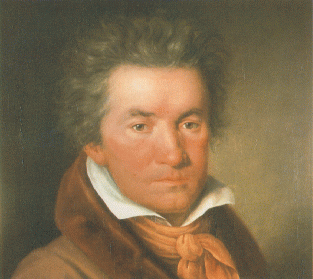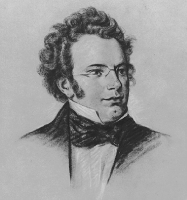Classical Music
Those of you who know me know that I am an avid listener of classical music. And it is for this reason that I chose to be on the "Vienna" neighborhood of Geocities.
This page will be more extensively developed in the near future, but I do have a few things below to keep you busy.

Check out the web site for WQXR, New York City's only full time classical music radio station. Some interesting facts about WQXR:
- It is the most listened to classical station in the country.
- On the air since 1936, it has the longest unchanged format in radio history.
- It is the official radio station of The New York Times, and every night at 9PM you can hear highlights of the front page of the following day's issue.
There are other classical music stations that broadcast their signal on the internet:
Now here are some trivia questions relating to some of my favorite musical material. If these questions capture your interest, I would encourage you to listen to any of the works mentioned below, as they are of the highest quality.
(1) Here's one that had me stumped for a while. On television,
you have probably seen the "Diamonds" commercials, sponsored by
DeBeers. A delightful orchestral work is featured in these commercials. Who wrote it? Is it a part of a separate work or
was it written for this commercial? Hint: This same composer has written music that has been featured in the Delta Airlines commercials.
(2) Ludwig von Beethoven expanded the dimensions of the symphony with his monumental third symphony, Eroica, (Heroic) which was originally dedicated to Napoleon. However, as the story is often told, when Napoleon declared himself emperor, the composer violently scratched out the dedication, shouting, "Now he too will trample on the rights of man!"
- Describe two things Beethoven does with this symphony that go
beyond the bounds of the classical masters that preceded him.
- In the fourth movement, Beethoven borrows a theme from another of his own works. Which one was it?

(3) Beethoven's ninth symphony (which repeatedly comes out as #1 in WQXR's countdown of the greatest classical works as voted by its listeners) features a choir in the fourth movement. This is yet another example of how he expanded the dimensions of the symphony. Who wrote the "Ode to Joy" text that Beethoven used?
(4) Franz Schubert is a romantic composer who brought us such favorites as the Unfinished symphony (No. 8 in b minor) and the Death and the Maiden String Quartet.
- How many movements for the Unfinished symphony were written?
- In the development section of the first movement of the Unfinished symphony, Schubert does not develop on the primary or secondary themes of the exposition, as is normally done. What theme did he use to develop?
- A giveaway: What recent motion picture, starring Sigourney Weaver, featured the Death and the Maiden string quartet?
- One of the most chilling songs ("lieder") written by Schubert describes a young boy being taunted by an "elf king" while riding on a horse with his father. The father doesn't believe in the boy, and attributes the voice the boy hears to the wind. What is the name of this song? What happens to the boy in the end?

(5) Only a few decades after the Eroica symphony was written, a French composer pushed the boundaries of the symphony even further. He wrote a programatic symphony - a new concept in which each movement was a musical representation of concrete events. The composer actually provided a written program that described a young musician dreaming of his beloved woman. The woman is represented by an idee fixe, a "fixed idea" which appears in each of the five movements. The program provides the basic setting; the music delivers impassioned emotions - a far cry from the classical masters (Mozart/Haydn) who reigned a generation earlier.
- Who is this composer?
- What is the name of the work?
- In the fifth movment, the Dies Irae (an ominous Gregorian Chant for the dead, literally, "Day of Wrath") is used with variations.
- Name two other classical works that use this theme.
- What 1980 motion picture, starring Jack Nicholson and Shelley Duval, opened with this theme?
(6) In 1888, composer Nikolai Rimsky-Korsakov conceived of Scheherazade, a four movement programmatic musical suite based on the tales of The 1001 Arabian Nights. "The Sultan Shahriar, persuaded of the falseness and the faithlessness of women, has sworn to put to death each one of his wives after the first night. But the Sultana Scheherazade saved her life by interesting him in tales she told him during one thousand and one nights. Pricked by curiosity, the Sultan put off his wife's execution from day to day, and at last gave up entirely his bloody plan".
- Describe how the Sultan's theme differs musically from that of the Sultana Scheherazade.
- What is the name of the first tale the Sultana tells? Why is the key of E major used in the musical representation of this tale?
- The second tale is "The Tale of the Kalendar Prince". What is a Kalendar?
- In the third tale, "The Young Prince and the Young Princess" what instruments are used to represent the prince and princess respectively?
(7) In the late 19th century, nationalism was predominant in Russian music. Five composers of this style are commonly referred to as the Moguchaya kuchka, or the "Mighty Handful". Who are these five composers? (Hint: Tchaikovsky is not one of them!)
Want the answers? Email me!

Click here to return.
This page was last updated 02/07/05.



